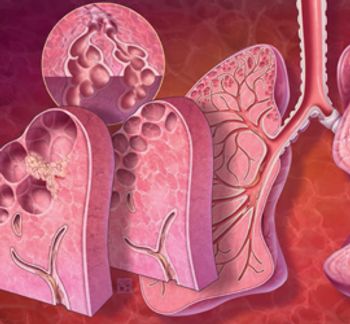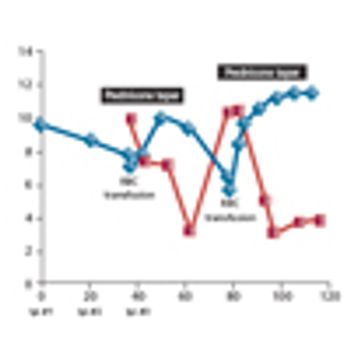
The FDA has approved telotristat ethyl (Xermelo) tablets for the treatment of patients with carcinoid syndrome diarrhea that has not responded to somatostatin analogs alone.

Your AI-Trained Oncology Knowledge Connection!


The FDA has approved telotristat ethyl (Xermelo) tablets for the treatment of patients with carcinoid syndrome diarrhea that has not responded to somatostatin analogs alone.

This video examines a phase II study that compared atezolizumab with or without bevacizumab vs sunitinib in untreated patients with metastatic renal cell carcinoma.

A review of the rules of the road for doctors, because everyone remembers their first license.

This video examines the idea of using clinical features (age, tumor size) to reduce treatment burden in patients with HER2-positive breast cancer.

This video examines chemotherapy options for HER2-positive breast cancer in the adjuvant setting, and what evidence there is for alternatives to an anthracycline backbone.

Do you know which sarcoma subtypes benefit from trabectedin? How many estimated cases of soft-tissue sarcoma are expected to occur this year? Test your knowledge on sarcoma in our latest quiz.

Long-term data from the phase III BC2001 trial confirmed that adding chemotherapy to radiation therapy improves locoregional control and reduces the rate of salvage cystectomy in patients with muscle-invasive bladder cancer.

Men with painful bone metastases from prostate cancer may be able to achieve clinically meaningful improvements in pain and quality of life as early as 10 days after undergoing radiotherapy.

Patients participating in cancer clinical trials were willing and able to report symptomatic adverse events and reported more events than investigators did.

Many non-elderly cancer survivors may change their use of prescription drugs, such as skipping doses or requesting cheaper medications, for financial reasons.

What second-line anti–PD-1 antibody demonstrated a survival benefit over an active comparator in patients with advanced urothelial cancer? Test your knowledge about bladder and renal cancers in our latest genitourinary cancers quiz.

This video examines a new study that looked at genomic alterations in the circulating tumor DNA of patients with metastatic RCC during first- and second-line therapies.

In this interview we discuss a study that found that survivors of thyroid cancer diagnosed with the disease at a young age had an increased risk of late effects from therapy.

A better delineation of the relationships between lung cancer, COPD, and emphysema may lead to significant improvements in the effectiveness of lung cancer screening programs, and to reductions in the morbidity and mortality associated with these deadly diseases.

A 60-year-old man with a history of coronary artery disease and JAK2 V617F–positive polycythemia vera presented to our bone marrow transplantation clinic with progressive fatigue, splenomegaly, and cytopenias.

In this interview we discuss how the ACA, which was passed in 2010, changed the way oncologists treat their patients, and how a repeal of the law would affect patients’ access to care.

We know that breast cancer represents a spectrum of diseases, with variation in prognosis, and that RT can range from highly complex treatments to the breast and regional lymph nodes, to complete avoidance of radiation.

To paraphrase a deep philosophical question: if an important, long-awaited phase III prospective randomized trial from Europe is published and no one pays attention, does it make a sound?

A small study found that it is feasible to detect BRCA1/2 reversion mutations in circulating cell-free DNA in patients with recurrent high-grade serous ovarian cancer. Those reversion mutations can help predict poor response to therapy in these patients.

A genomic analysis of Ewing sarcoma found substantial epigenetic heterogeneity both between tumors and within tumors, highlighting the need to consider non-genetic aspects in cancer biology and treatment.

Are you up to date on adverse prognostic factors for Ewing sarcoma? Do you know the latest drug approved for metastatic soft-tissue sarcoma? Test your knowledge on sarcoma in our latest quiz.

This video with Stacy Moulder, MD, highlights efforts to identify various subtypes and molecular targets in triple-negative breast cancer, which could lead to treatment options with already approved agents.

Oncologists deliver news-good and bad-on a daily basis. It is, for me, the most challenging and rewarding part of my job.

What clinical risk factor has been found to be most prevalent for both premenopausal and postmenopausal women? What population sees a benefit of oophorectomy for preventing breast cancer? Test your knowledge in our latest quiz.

This video examines a study that looked at whether aromatase inhibitors are associated with higher myocardial infarction risk in breast cancer patients.

Use of communication coaching that included a question prompt list-or structured lists of questions given to patients prior to consultations-helped patients with advanced cancer and their caregivers to bring up topics of concern during oncology office visits.

Most patients with cancer decreased their physical activity levels following their diagnosis, in spite of the potential benefits associated with exercise, according to a new study.

Anxiety is common among partners of young breast cancer survivors, even several years after the diagnosis, according to a new analysis. Anxiety was correlated with the use of less constructive and more maladaptive coping strategies.

Adjuvant chemotherapy for biliary tract cancer using GEMOX (gemcitabine/oxaliplatin) was feasible, but did not result in an improved recurrence-free survival or quality of life compared with surveillance in the phase III PRODIGE 12-ACCORD 18 trial.

Use of stereotactic body radiation therapy (SBRT) was equally effective as transarterial chemoembolization (TACE) as a method of bridge to transplant among patients with hepatocellular carcinoma.